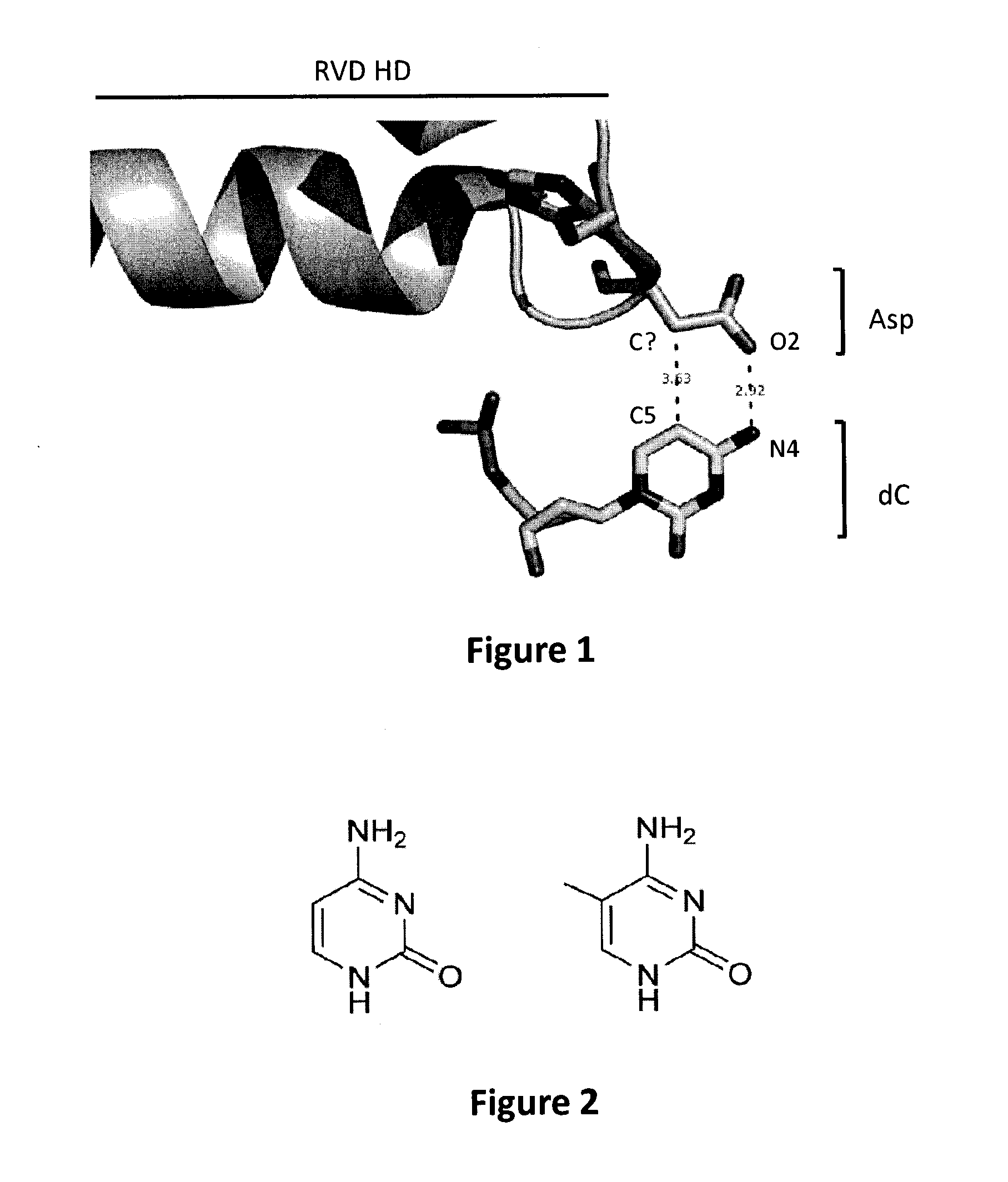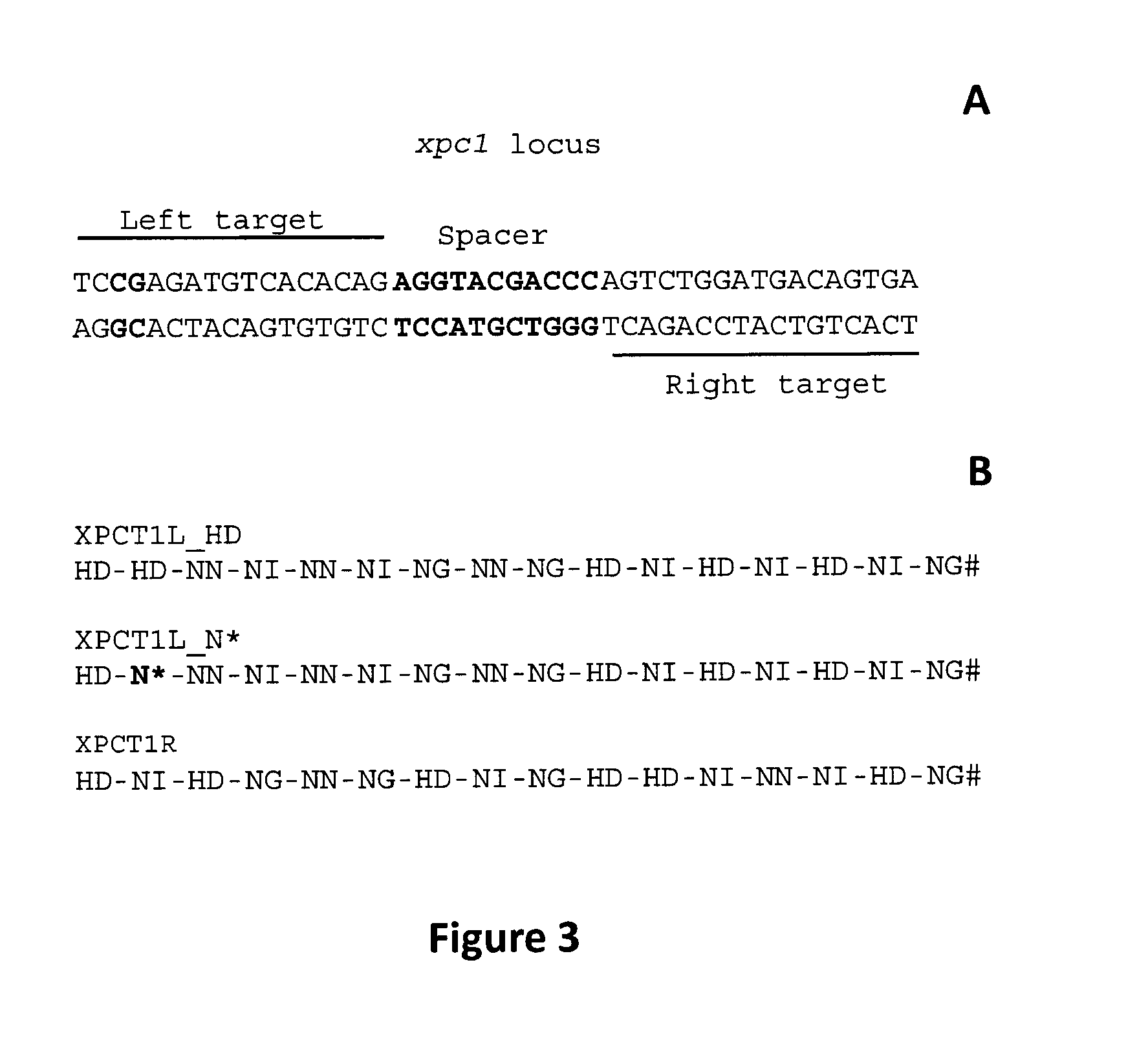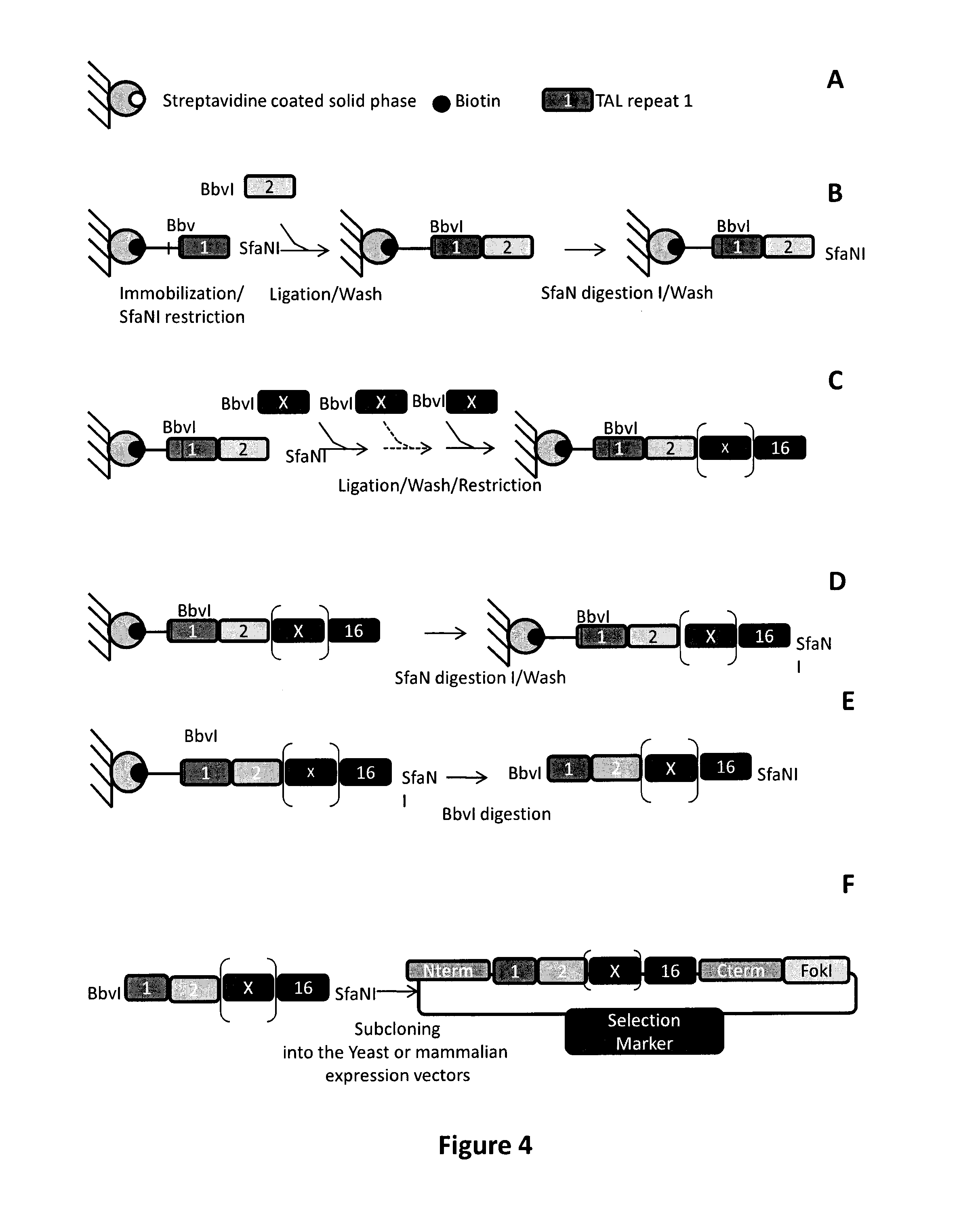Method to overcome DNA chemical modifications sensitivity of engineered tale DNA binding domains
a technology of dna binding domain and chemical modification, which is applied in the field of polypeptides, can solve the problems of important epigenetic drawbacks and hinder the recognition of modified cytosine, and achieve the effect of overcoming such sensitivity, efficient detection, and targeting and/or processing nucleic acids
- Summary
- Abstract
- Description
- Claims
- Application Information
AI Technical Summary
Benefits of technology
Problems solved by technology
Method used
Image
Examples
example 1
[0227]To investigate the sensitivity of TAL repeats domain to CpG methylation an engineered TAL nuclease model named XPCT1 (or XPC4T3) was specifically designed to bind and cleave xpc1 locus (also named xpc4) (SEQ ID NO: 1) containing one methylated CpG. XPCT1 TALE-nuclease was composed of two independent entities XPCT1L (XPCT4T3.3) and XPCT1R (XPC4T3.4), each containing a TALE-derived DNA binding domain fused to the catalytic domain of the FokI restriction enzyme. XPCT1L and XPCT1R were engineered to bind to two DNA target sequences (Left and Right targets respectively) separated by a 11 bp spacer sequence (xpc1 locus, FIGS. 3A and B). Binding of XPCT1L and XPCT1 R to xpc1 locus was expected to allow FokI to dimerize and create a double-strand break within the spacer.
[0228]The abilities of RVD HD and N* to bind to 5-methyl-cytosine located at position +2 of the Left target (FIG. 3A in red) were compared by engineering two variants of XPCT1L containing either RVD HD or RVD N* in pos...
example 2
Ability of Naturally Occurring TAL Repeats H* and NG to Overcome TAL DNA Binding Domain Sensitivity to 5-Methyl-Cytosine
[0236]We hypothesized that naturally occurring TAL repeats, other than TAL repeat N*, either lacking the glycine 13 or harboring small side chain residues at the same position, could efficiently bind 5-methyl-cytosine. To confirm this, we assessed the ability of TAL repeats H* and NG to substitute HD in position +2 of XPCT1 TAL DNA binding domain (FIG. 6A) and rescue its activity toward its endogenous methylated locus in 293H cells (SEQ ID NO: 1).
Material and Methods
—Materials
[0237]TALE-nucleases XPCT1L-HD, XPCT1L-N*, XPCT1L-NG, XPCT1L-H* and XPCT1R (SEQ ID NO: 26-30 respectively encoding SEQ ID NO: 38-42) were obtained according to the method described in earlier examples. Active TALE-nucleases were formed by a combination of one “TALE-nuclease L” (XPCT1L-HD, XPCT1L-N*, XPCT1L-NG or XPCT1L-H*) and one “TALE-nuclease R” (XPCT1 R).
[0238]See example 1 for monitoring ...
example 3
TAL Repeat N*, a Universal 5-Methyl-Cytosine Binding Module
[0242]To evaluate the ability of TAL repeat N* to overcome TAL DNA binding domain sensitivity to 5-methyl-cytosine in different contexts (i.e. at other endogenous methylated targets), we engineered two other TALE-nucleases, XPCT2 and XPCT3, specifically designed to process the methylated endogenous XPC targets called XPC2 and XPC3 (SEQ ID NO: 50 and SEQ ID NO: 51). These targets contained respectively one and two 5-methyl-cytosine located at different positions (FIG. 7A), making it possible to evaluate the influence of the number and position of N* repeats in a TALE DNA binding domain.
Material and Methods
[0243]See examples 1 and 2 for methods
—Materials
[0244]TALE-nucleases XPCT2L-HD, XPCT2L-N*, XPCT2R, XPCT3L-HD, XPCT3L-N*, XPCT3R-HD and XPCT3R-N* (SEQ ID NO 31-37 respectively encoding SEQ ID NO: 43-49) were obtained according to the method described in earlier examples. Active TALE-nucleases were formed by a combination of o...
PUM
| Property | Measurement | Unit |
|---|---|---|
| Ratio | aaaaa | aaaaa |
| Affinity | aaaaa | aaaaa |
Abstract
Description
Claims
Application Information
 Login to View More
Login to View More - R&D
- Intellectual Property
- Life Sciences
- Materials
- Tech Scout
- Unparalleled Data Quality
- Higher Quality Content
- 60% Fewer Hallucinations
Browse by: Latest US Patents, China's latest patents, Technical Efficacy Thesaurus, Application Domain, Technology Topic, Popular Technical Reports.
© 2025 PatSnap. All rights reserved.Legal|Privacy policy|Modern Slavery Act Transparency Statement|Sitemap|About US| Contact US: help@patsnap.com



